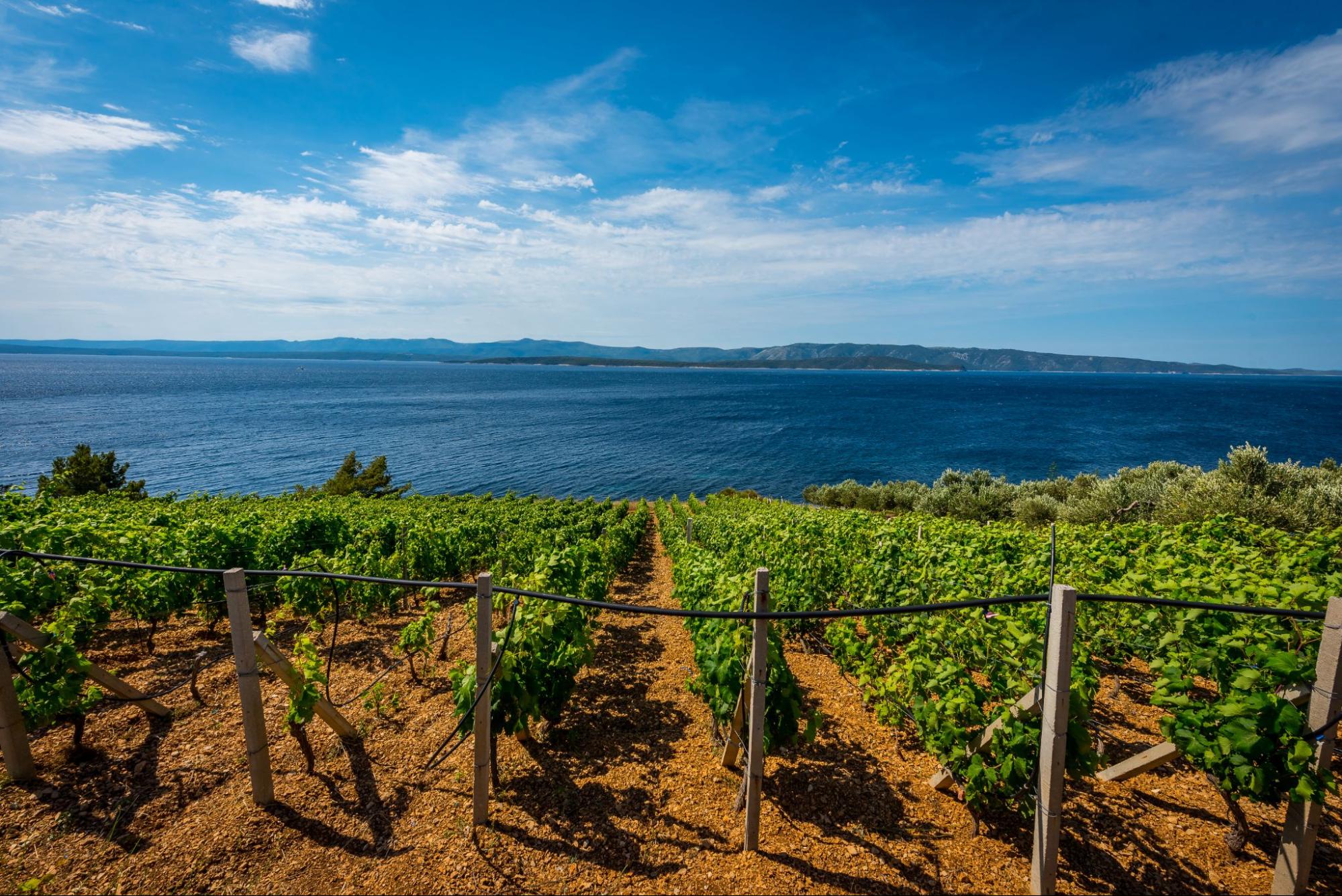- Wine Color/Type
- Top Occasions
- Unique Wines
- Surprise Me!
Croatia, the Beautiful Wine Country
Croatia, with its mesmerizing Adriatic coastline, is renowned not only for its natural beauty but also for its rich vinous history. For those who hold a penchant for wine, Croatia offers a captivating journey. Dive into the depths of Croatian wine culture and immerse yourself in an intoxicating narrative that spans centuries.
Croatia offers a beautiful landscapes and complex vineyards: (Credit: BlackMediaHouse/stock.adobe.com)
"In Vino Veritas" – in wine lies the truth. In Croatia, wine also speaks of history. The foundations of Croatian viticulture hark back to the times of the ancient Greeks and Romans. Notably, the island of Korčula boasts a winemaking tradition that has thrived since the 4th century BC – a true "Bacchus" blast from the past! With a wine-covered area ranging between 20,000 to 25,000 hectares in a land comparable to West Virginia in size, Croatia's commitment to viticulture is undeniable.
Their winemaking tradition runs deep within families. A vast number of small producers, whose families craft their own wine, dominate the scene. It's hard to believe that there aren't any major brands from the country yet, making the discovery of small artisanal producers — who take immense care to produce the highest quality possible — all the more exciting.
The Wine Growing Regions
Croatia boasts two major wine regions: Continental Croatia and Coastal Croatia.
Continental Croatia
This region is a haven for refreshing white wines, complemented by a selection of reds. Dominant areas encompass Slavonija and the northwestern Zagorje. It's as if you're savoring a “continental breakfast” for your palate.
Coastal Croatia
Divided between Dalmatia and Istria. Dalmatia is celebrated for its hearty reds, thus earning its moniker, the "Cabernet of Croatia." In contrast, Istria presents a diverse array of both white and red wines, catering to the palate of every wine aficionado.
Grgić Plavac Mali
Reflective of its wines, Croatia's terroir is diverse and charismatic. The coastal stretches enjoy a Mediterranean climate, ideal for cultivating grape varieties like Plavac Mali, while the continental expanses bask in a temperate continental climate, fostering white grapes such as Graševina.
The 6 most important grape varieties of Croatia
Among the vast landscape of grape varieties, here are the standouts:
Graševina
Crisp with a medium body, it echoes the freshness of biting into a green apple under the sun.
Malvazija Istarska
This aromatic white wine evokes memories of a freshly baked apricot pie.
Pošip
A full-bodied delight brimming with citrusy notes - it's a tropical treat for the senses.
Plavac Mali
Croatia's national pride. Bold, rich, and spicy, it dances on the palate like a passionate flamenco.
Saints Hills Dingač
Teran
A robust red with pronounced acidity.
Babić
Dive into its dark depths, tinged with whispers of Mediterranean herbs.
Rich in Traditions
Amphoras, ancient clay pots once pivotal in Roman and Greek winemaking, are making a comeback. Croatian vintners bury these amphoras to let the wine ferment and mature, mirroring the qvevri wine-making traditions of Georgia. This method, advocating minimal interference, yields wines that genuinely resonate with their origins.
The global wine community's growing infatuation with natural wines hasn't gone unnoticed in Croatia. Embracing organic or biodynamic farming, avoiding synthetic chemicals, and using native yeasts for spontaneous fermentation, Croatia's natural wines present complex flavors, diverse textures, and an authentic representation of its multifaceted heritage.
In Croatia, wine is more than just a beverage; it's an embodiment of culture. The nation pulsates with wine-centric events, festivals, and tours. For those eager to experience wine and local traditions, Croatia is the place to be.
Ready to go on a Croatian wine odyssey?
Peter Douglas
Latest articles



